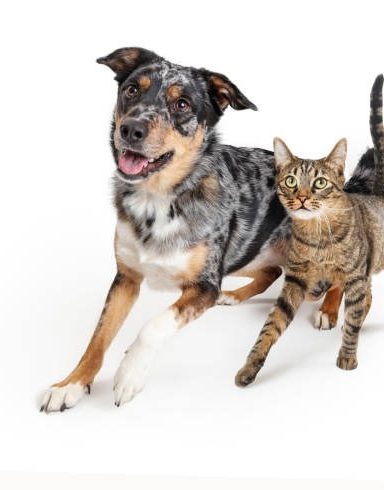When our pets start acting strangely, we get worried. We want them to feel good and be active and fun. If they are sick, it’s really important to find out why as soon as we can. Veterinary labs are important but often unnoticed. Have you ever thought about what happens inside a vet lab when there’s a serious problem with a pet? We’re going to explain how a vet lab quickly works out what’s wrong with your pet in an emergency. So, sit down and get comfortable, and let’s learn about how these labs help save our pets.
Urgent Cases at the Vet: The Ins and Outs
When it comes to emergencies, every second counts. Vet labs are like the emergency rooms for our pets, equipped with state-of-the-art technology and trained professionals ready to detect and diagnose whatever ailment may be troubling your furry friend.
Sometimes, your pet needs help fast, and you need to know where to turn. For those living locally, seeking immediate veterinary assistance in Clinton Township is a step towards ensuring that immediate care is within reach.
The Role of Veterinarian Labs in Emergency Care
To start, a good vet lab is a pet detective’s best friend. Imagine your pet as a puzzle, and the lab is trying to solve it. They’re going to look for clues in bloodwork, imaging, and a variety of tests to piece together what’s wrong.
The Diagnostic Process
It begins with the collection of samples. Your vet will collect blood, urine, or tissue based on the symptoms presented. But unlike a routine checkup, in urgent situations, the lab prioritizes your pet’s samples for immediate analysis. This is like rushing your application to the top of the pile because it’s that important.
Next comes the testing phase. Depending on the issue, several tests might be run. These could include:
-
Blood tests: To check for infections, organ function, or blood cell counts.
-
X-rays or Ultrasounds: To visualize any potential internal issues.
-
Urine tests: To examine kidney function or a urinary tract infection.
-
Cytology: If there’s a lump or bump that needs a closer look under the microscope.
Speed and Accuracy
A vet lab’s goal is to find answers, but not just any answers – accurate ones. And they’ve got to do it fast. Imagine they’re in a race against time, and the finish line is the correct diagnosis. With the latest gadgets at their disposal, these labs can often deliver quick results, sometimes in a matter of minutes or hours.
High-Tech Equipment to the Rescue
In any emergency, having the right tools can make all the difference. Vet labs have an arsenal of high-powered machines and gadgets that could make any tech enthusiast’s eyes light up. From the blood analyzers flashing numbers like slot machines to the constant hum of the centrifuges, these tools are vital to cracking the case of your pet’s ailment.
Microscopic Marvels
At the root of many diagnoses are microscopic examinations. By zooming in on cells, vet technicians can spot unusual suspects like bacteria, parasites, or indicators of diseases that might be causing the problem.
Collaborative Efforts for Your Pet’s Health
It’s not just machines and tests. It’s also about the wisdom of the vets and technicians working together. They compare notes, toss around ideas, and sometimes reach out to specialists to zero in on what’s troubling your pet.
Getting a Second Opinion from Specialists
When things get really complex, some samples might be jet-set to specialist labs. These are a bit like exclusive clubs, where only mystery cases that stump the local experts get a VIP pass.
Your Role in the Emergency Diagnostic Process
You’re part of this process, too. Vets and labs need your keen eyes and ears – after all, no one knows your pet like you do. Share every odd behavior or symptom you’ve noticed with your vet; these pieces of the puzzle are invaluable.
Providing Essential Information
Don’t hold back – give it all. The late-night snack raids, the new limp, the strange noises – these can all help guide the vet diagnostic team in the right direction.
Choosing the Right Emergency Vet
Not all vets are created equal when the clock is ticking. You’ll want a clinic that’s got a reputation for speedy and accurate work. They’re lifesavers when your pet is in a pinch.
And if you’re ever wondering about a reliable place that provides urgent care, Snider Veterinary Services is your go-to. They’ve made quite the name for themselves, combining expertise with compassionate care for your four-legged family members.
After the Diagnosis
Once the lab has worked its magic, you’re not at the end of the road yet. The diagnosis is just the beginning. Now, it’s about treatment plans and making sure your pet gets back to their bouncy, happy selves.
Understanding the Treatment Plan
Your vet will walk you through the findings and lay out the next steps, ensuring you understand everything. They’re your guide in this journey back to pet health.
Key Takeaways for Pet Parents
-
Act quickly if your pet is in distress – time is of the essence in emergencies.
-
Trust in the vet lab process and know that they’re using cutting-edge technology to diagnose your pet accurately.
-
Know your role in providing information and observations about your pet’s health.
-
For those nearby, remember that dog diagnostic lab services are essential in such urgent situations, and identifying a reliable provider ahead of time is key.
Final Thoughts
We’ve walked through the nitty-gritty of an urgent vet lab diagnosis. We hope this lights the way and eases your mind if you ever find yourself racing to the vet. Always remember – with modern technology, skilled professionals, and your loving awareness, your pet’s health is in good hands. While we all hope never to need urgent vet care, it’s comforting to know the ins and outs of how these dedicated labs leap into action for our pets.





